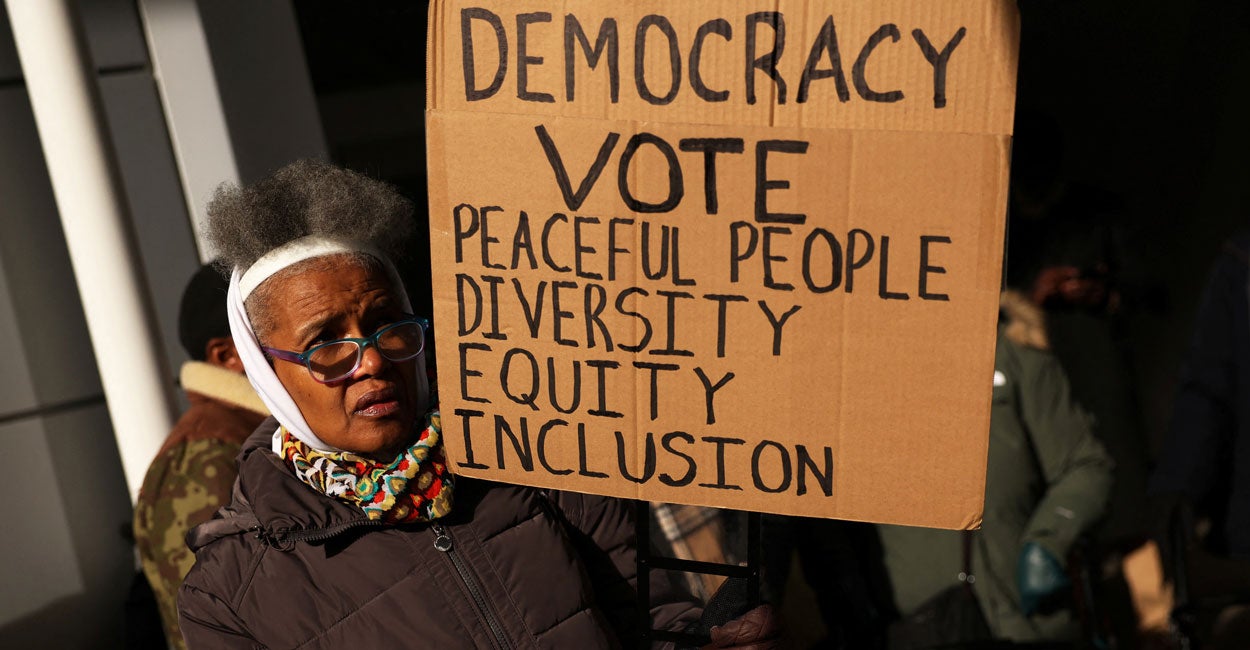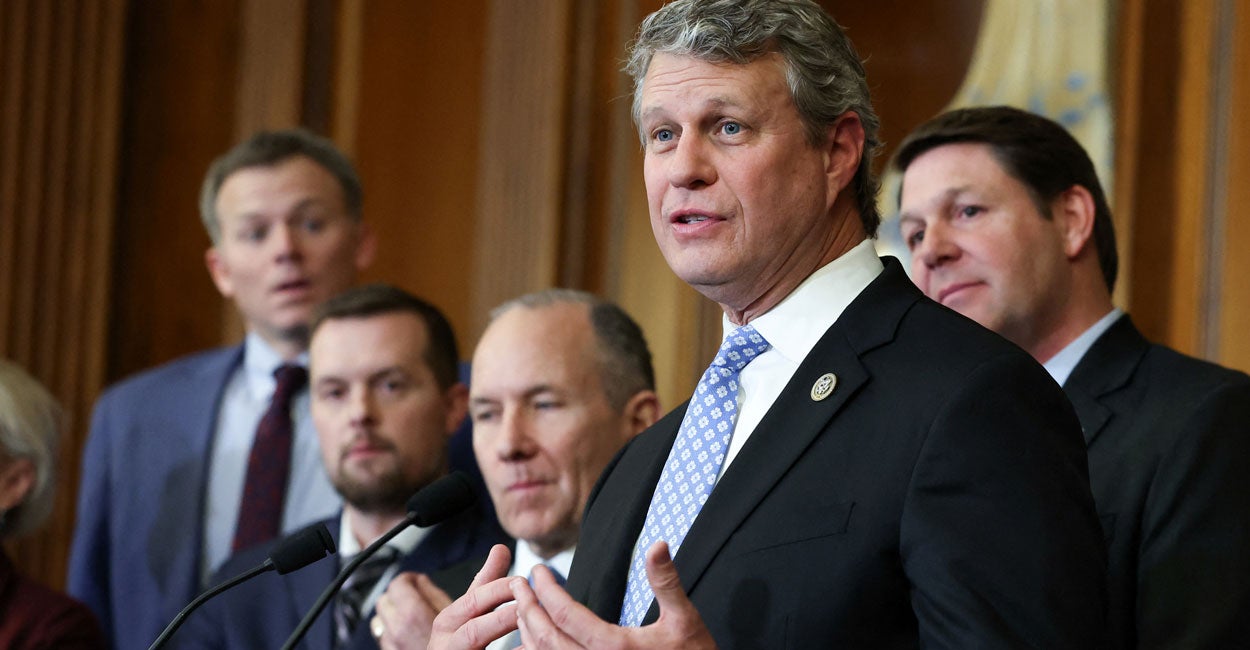
www.dailysignal.com
The War on White Men Is Real—Here’s the Proof
Editor’s note: This is a lightly edited transcript of today’s video from Daily Signal Senior Contributor Victor Davis Hanson. Subscribe to our YouTube channel to see more of his videos.
Hello, this is Victor Davis Hanson for The Daily Signal. There’s been quite a controversial article by one Jacob Savage in the conservative magazine Compact. In it, he describes the destruction of a whole generation, career-wise, of white males, particularly in the entertainment industry, screenwriting, journalism, the humanities, academia.
And his thesis is tri-part. He says that, traditionally, white males had dominated these fields, as they did others. And that was a part of demography. After all, until about 1965 or ’70, 90% of the country was so-called white, but as immigration increased and there was more emphasis on feminism, civil rights, the white male hierarchy decided to help people who otherwise would not be encouraged to apply to these marquee jobs.
And this was sort of a proto affirmative action. And then it was reified by the government. And so, we saw the beginning in the 1960s, ’70s, and ’80s of affirmative action, and this reduced the number of white males from their demo from being overrepresented, let’s say 70%, when their demographic now is 35, down to the millennium proportionality.
There was no disproportionate demographics. They were more or less proportionate in screenwriting and writing and movie scripts, etc. Right before and then especially after George Floyd, there was something, I guess we would call it reparations or repertory hiring, admissions. In my case, I watched Stanford University go down to 9% white males were admitted to their freshman class, even though that demographic is about 35% of the population.
And this radically changed journalism, screenwriting, academia. And as Mr. Savage points out, some of the exclusionary actions were outright and unabashed, I would call it, racism. He doesn’t, he says prejudicial behavior. So, you would get down to 8%, 9%, 10%, 11%, 12% white males. That meant there was almost no opportunity. And instead, women and minorities were hired.
He ends the article by suggesting that if you get rid of meritocracy—and all of these fields, forget about the tribal affiliations of those who were in them, they did have meritocratic standards. So, I guess I came away from his article thinking, if you don’t think the movies are very good today, the “Star Wars” franchise has gone downhill, the “James Bond” franchise has gone downhill, the entertainment at the halftime shows are pretty bad, Disneyland is not very welcoming anymore, you know the scenario. It’s because we destroyed standards and we replaced them with tribal chauvinism.
Where I think some of you are gonna disagree with this very powerful and well-written article is that he allots no anger, no blame. He says that the white male hierarchy that implemented these changes on another generation, i.e., his generation, it is not to blame, and the people who took advantage of these repertory or race-based or gender-based hiring should not be faulted either. They just took advantage of a welcoming position.
And then, rather than being defined, he sort of shrugs his shoulders and says, I told my children maybe I didn’t succeed. It was kind of tragic. I do blame the older white hierarchy, mostly liberal professors, liberal journalists, liberal directors, liberal actors, liberal screenwriters. They all had nice cushy jobs. They earned them. Then they decided in their utopian generosity that they were going to admit people into their guilds without the same criterion that they had had because it made them feel better.
In other words, they didn’t accept Tom Sowell’s or Shelby Steele’s advice or Jason Riley’s that says, when you do that, you’re going to encourage mediocrity and opportunist, and you’re going to deprecate the work of African Americans or Hispanics that are very talented. But that’s what you’re going to do just to gratify your own sense of ego and shame. And that’s exactly what happened.
So, I do blame that group because all they had to do is say, they could have said: “We have to have a radical change at Disney Pictures. We have to have a radical change at sitcoms. We have to have a radical change in screenplays. And because we have seven white males in the journalism room and we’re all 70, we’re making great money, one of us is gonna have to retire and give our slots to other white males that are young, and then we can hire additional ones.”
They didn’t do that. It was all, I’m going to experiment on these Guinea pigs without any exposure of my title, my job, my salary, my benefits. And they destroyed a whole series of genres.
The other thing that I would say is I do blame the people who took advantage of that, especially those who knew they were not qualified. And then to stay in those positions when they did not have the meritocratic criteria, they had to perpetuate the idea of systematic racism.
What do I mean by that? Anybody, to take one example, who listened to Joy Reid on MSNBC, “The ReidOut,” or whatever her show was, knew that she was A) not truthful, B) paranoid, C) hypocritical, D) ignorant. I don’t care where she went to school or what kind of degree she got, she was not qualified for that job. She tanked all of their ratings. People did not wanna watch her.
And I don’t think that she was an innocent victim. I think she took advantage of that goodwill, especially when she was supercharged after the death of George Floyd to take advantage of that situation and to voice, I think, opinions that were objectively racism. So, not everybody, but I do think people took advantage of this system.
What did he end up with, Mr. Savage? He sort of said this was so unfair and so tragic. We lost such talent. It was so unfair.
Yes. But I would urge all of you listeners to read a little essay in response by Jeremy Carl. He said, no, no, that’s not—you’ve got the diagnosis right, but you don’t have the therapy right. We don’t just shrug our shoulders and say that was unfair, and it’s tragic, and millions of lives were destroyed. We fight back. And that’s what President Donald Trump has done with the destruction of DEI. And Jeremy Carl said it’s racism. Whether it’s white on black or black or white, or white on minority or minority on white, doesn’t matter.
You don’t address a perceived injustice by creating a greater injustice. You don’t destroy the lives of a whole generation of people for the goodwill of your own spirit or something to make you feel good. No. These people were culpable. They did great damage, and they have to be held accountable.
We publish a variety of perspectives. Nothing written here is to be construed as representing the views of The Daily Signal.
The post The War on White Men Is Real—Here’s the Proof appeared first on The Daily Signal.














